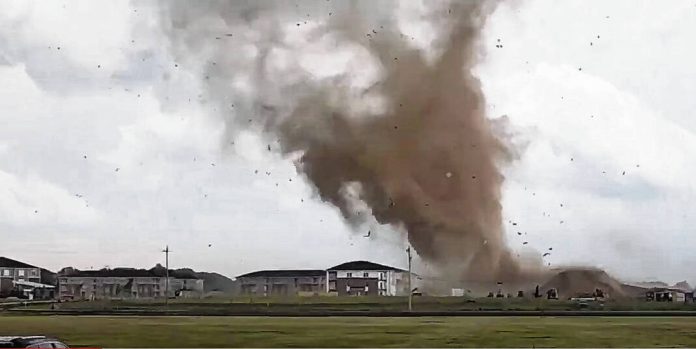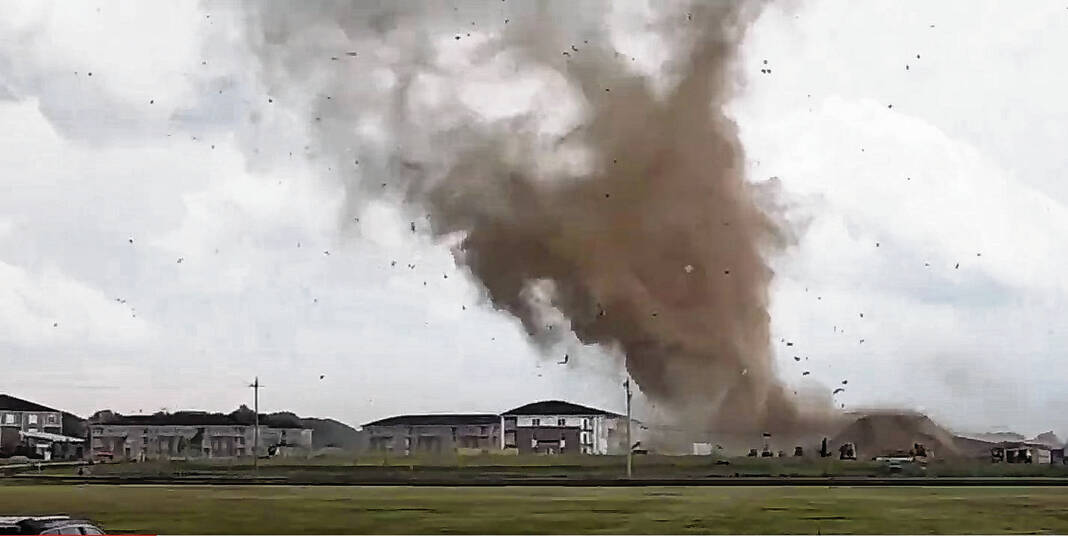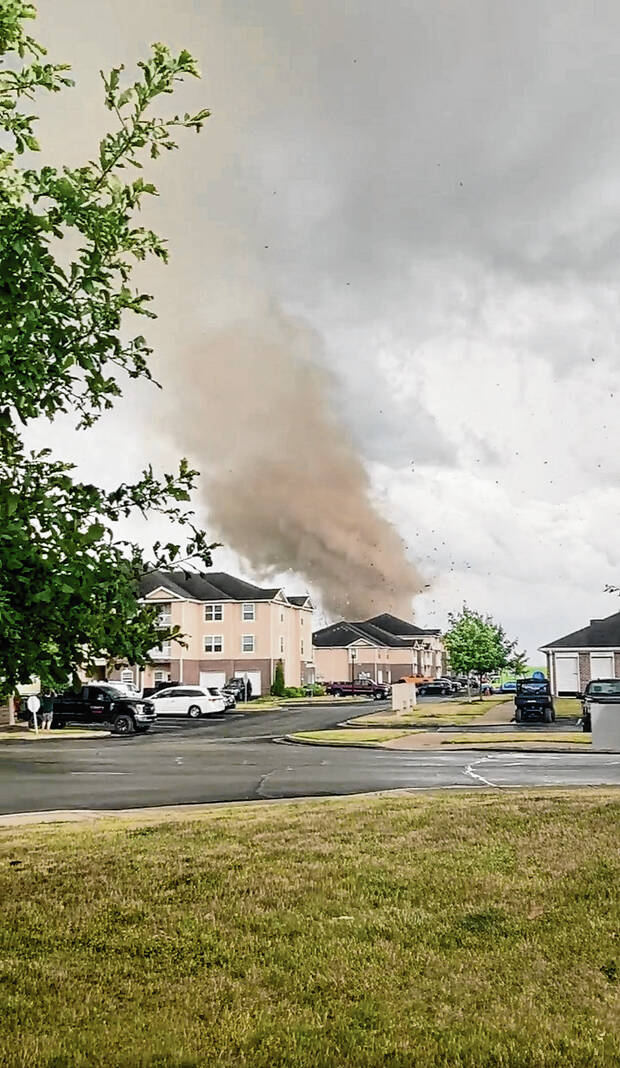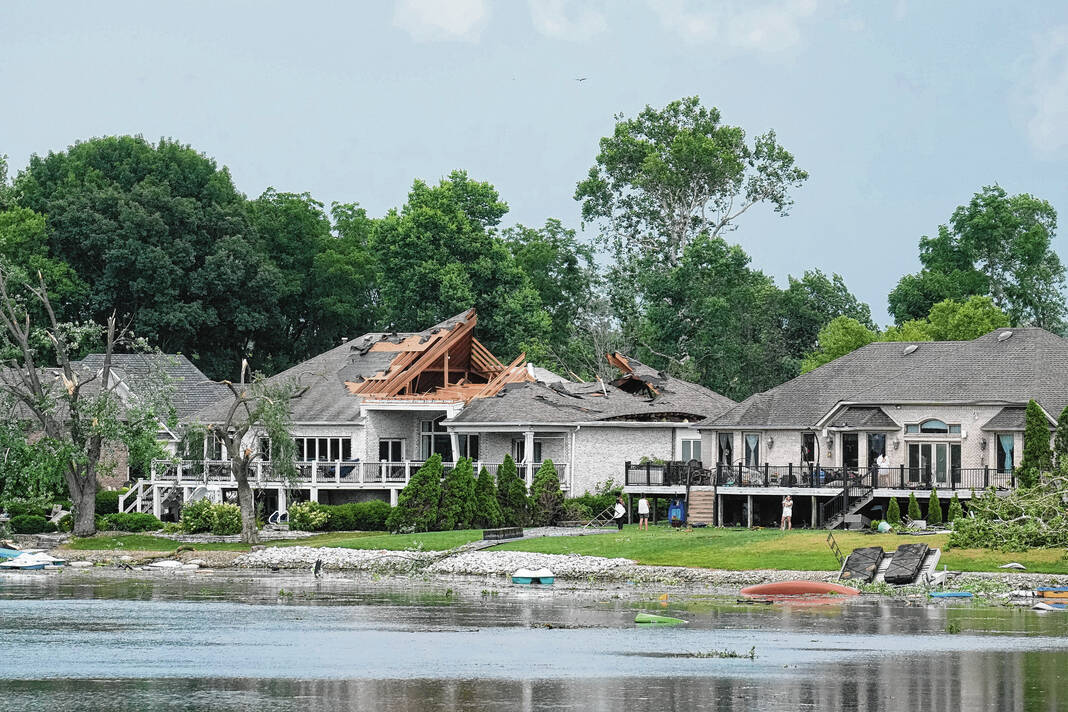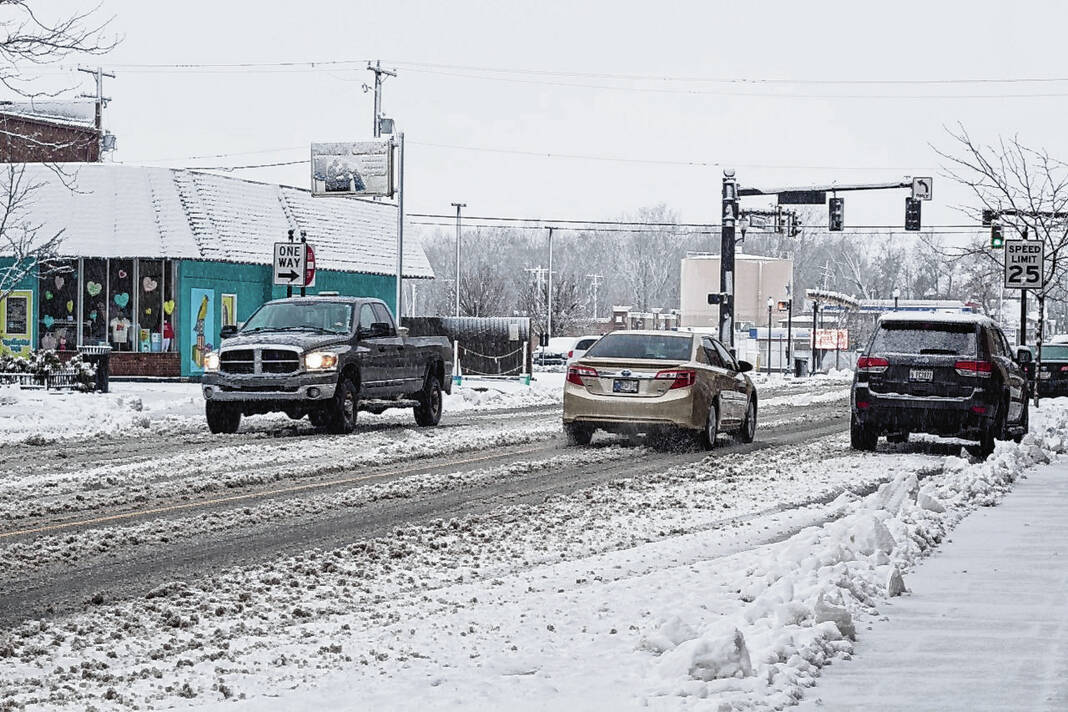2023 was a year of weather extremes for the Indianapolis area, meteorologists say.
Indianapolis saw its fourth highest average temperature since records began in 1870 and third least snowfall on record. Zooming out, Indiana saw the second most tornadoes on record in 2023, recording 54 tornadoes.
On the flip side, conditions were temperate in the winter months and there was a lack of summer heat. Prolonged dry periods led to intensifying drought through June, along with most of the fall, according to an annual climate summary report from the National Weather Service office in Indianapolis.
The year also saw an active and deadly severe weather season. But it was sporadic in the spring and confined to seven weeks in midsummer, the weather service says.
Temperature-wise, 2023 was mild overall. It was also Indianapolis’ fourth-warmest on record, only behind the years of 1921, 1931 and 2012, the report says.
Plus, it was nearly without snow.
“We’ve actually had now four years of a snow drought, if you want to call it that, with 2023 really nailing that in because we had our third-least snowiest year,” said Alexander McGinnis, the meteorologist who prepared the annual climate report for NWS Indianapolis.
Snowfall was infrequent and light during the beginning of the year, with only a trace reported during February in Indianapolis — the lowest for the month since 1949. The greatest snowfall that winter was on Jan. 25 and 26, bringing 4 to 6 inches to north-central Indiana counties and 3.1 inches in Indianapolis, according to the report.
The year closed out with a lack of snow too. The only exception was snow showers from Dec. 27 to 29 that dropped snow on several far western and far southern counties, the report shows.
One of the most defining parts of the year was the lack of freezing cold, specifically a new record being set for the fewest days that were held below freezing, or 32 degrees Fahrenheit. For Indianapolis, there are typically 29 days a year that have a high temperature of 32 degrees or lower, McGinnis said.
2023 only had seven days, smashing 1990’s record low of 10.
“Why that’s the most distinctive thing for the whole year is because it shows that we had a very mild winter to start the year,” he said. “We had, on the whole, a very mild last couple months of the year and we had temperatures that did not promote snowfall.”
Severe weather was another defining mark of the year. Indiana set a record for the second most tornadoes on record for a single year with 54. Only 2011 has more, with 72 twisters recorded, according to the report.
Unlike temperature records, which go back to the late 1800s, official tornado records only go as far back as 1950. Additionally, more tornadoes have been reported in recent years since the implementation of Doppler radar technology in the 1990s, which has improved tornado detection.
“It was easier to see the smaller, weaker tornadoes that we maybe could not have seen before Dopplers came out,” McGinnis said.
Of the 54 twisters that hit Indiana last year, 18 were in NWS Indianapolis’ 39-county area of responsibility. Twisters also touched down in the Ohio River Valley and in northern Indiana, McGinnis said.
Ten tornadoes spawned in Central Indiana over the course of 72 minutes on March 31 — five from a rotating supercell thunderstorm that tracked from southern Illinois and five more from a severe squall line of storms with heavy rain and high winds crossing the region’s northern counties. Additional tornadoes across northern Indiana would bring the total for the night to 23, the weather service said.
Five people died during the tornadoes, and $40 million in damage was reported. The outbreak caused the first tornado fatalities in Indiana in 11 years and the first EF-3 tornadoes in Central Indiana since 2016, the report says.
Johnson County was struck by tornadoes three times in 2023 — twice on March 31 and once on June 25.
Two tornadoes struck late on March 31, with an EF-0 causing mild damage in rural Union Township and an EF-3 causing damage to 179 homes and businesses in Whiteland. An EF-2 tornado ripped through White River Township on June 25, causing damage to the area stretching from Mullinix and Travis roads to Tracy Road in New Whiteland.
Along with the March outbreak and a “mini-outbreak” near the end of June, tornadoes also touched down in February in Hancock County. There were also some other “mini-outbreaks” in northern and far southern Indiana during the summer, which speaks to the temperature patterns seen throughout 2023, McGinnis said.
While the year was mild overall, the summer was near normal. June was only two degrees below normal, and July never got too hot, he said.
Whenever it is super hot in the summer, it’s because of a subtropical ridge — an area of high pressure — that would build from the south to bring hot and humid temperatures. This did not happen in 2023, as Indianapolis was more on the northern edge of the ridge, McGinnis said.
Heading into 2024, the NOAA Climate Prediction Center’s outlooks show a “slightly greater chance” of above-normal temperatures for the year. While the National Weather Service only forecasts seven days in advance, the Climate Prediction Center, a sister agency of the NWS, does longer-term outlooks.
These temperatures would likely not be as far above normal as last year though, McGinnis said.
“[2023] was our fourth warmest year out of 150-some years, so for us to repeat that would be low chances,” he said. “But certainly it does appear at this time there’s a greater chance of temperatures being above normal going into 2024.”
Since it was uncommonly warm and less snowy last year, McGinnis said there’s a chance residents may not be acclimated to a more normal cold and snowy winter. People should be aware of this as winter continues, he said.
“We normally get about 25 inches of snow a winter … We’ve had about half of what you would expect over the last four years,” McGinnis said. “So keep in mind if we do go back to more normal cold and normal snow, it might be quite a stark contrast to what people have seen recently.”


